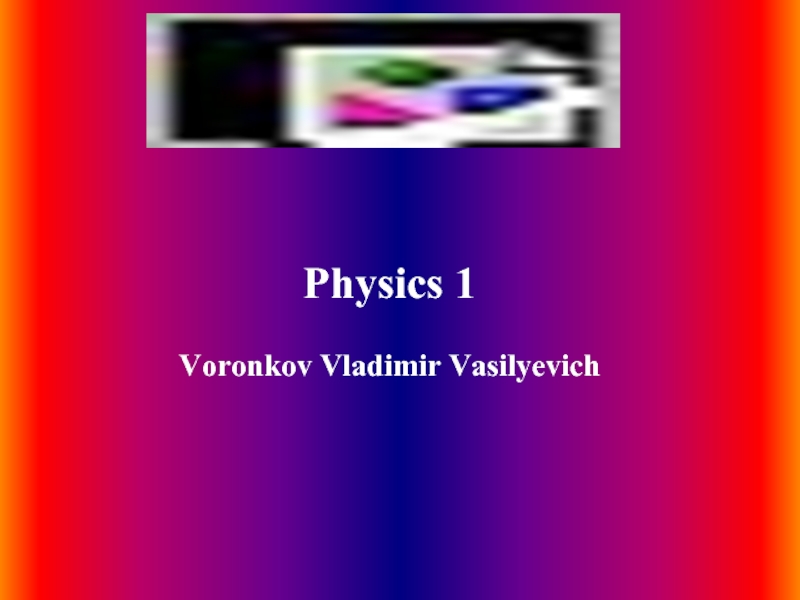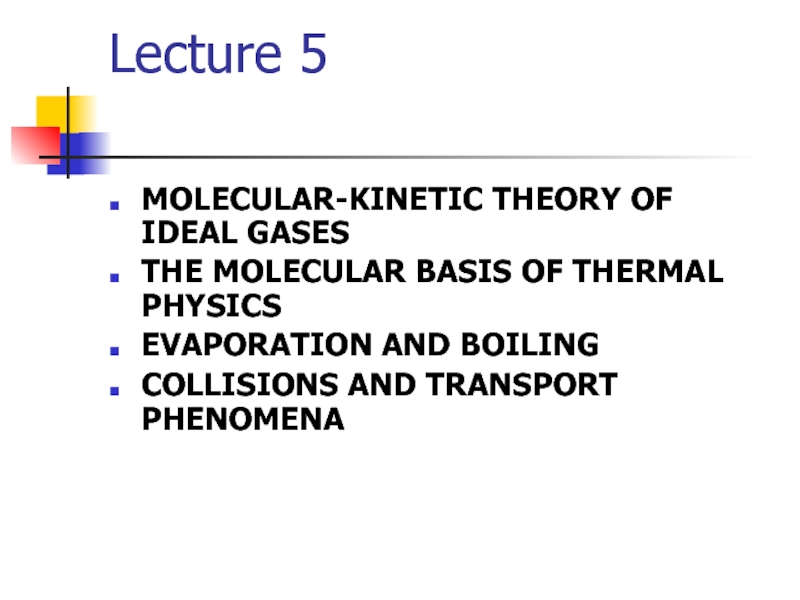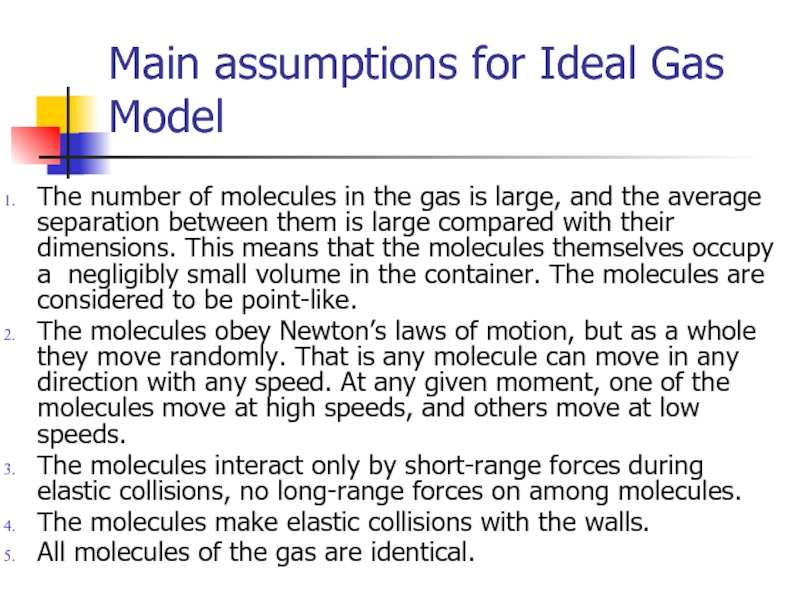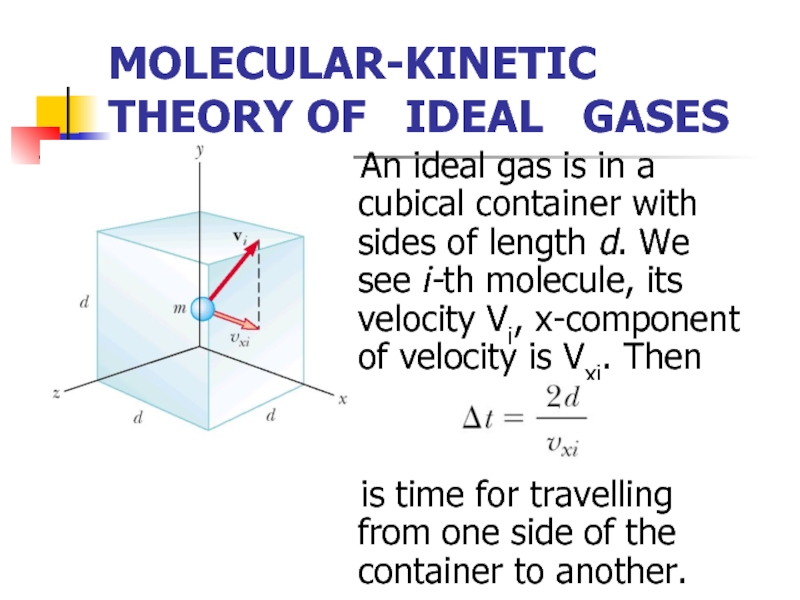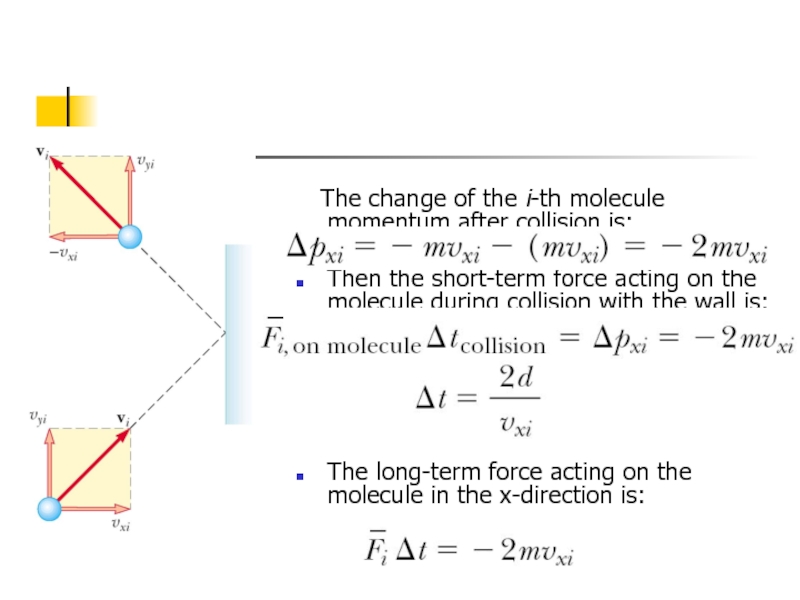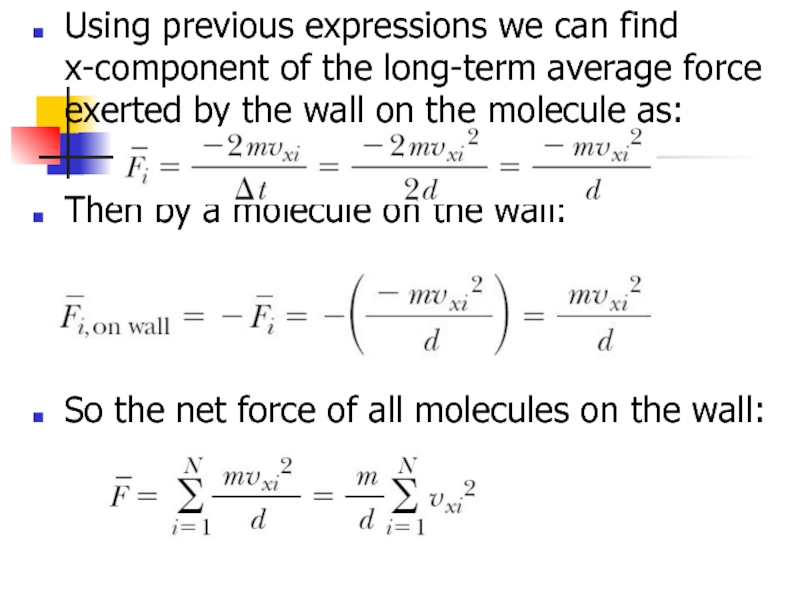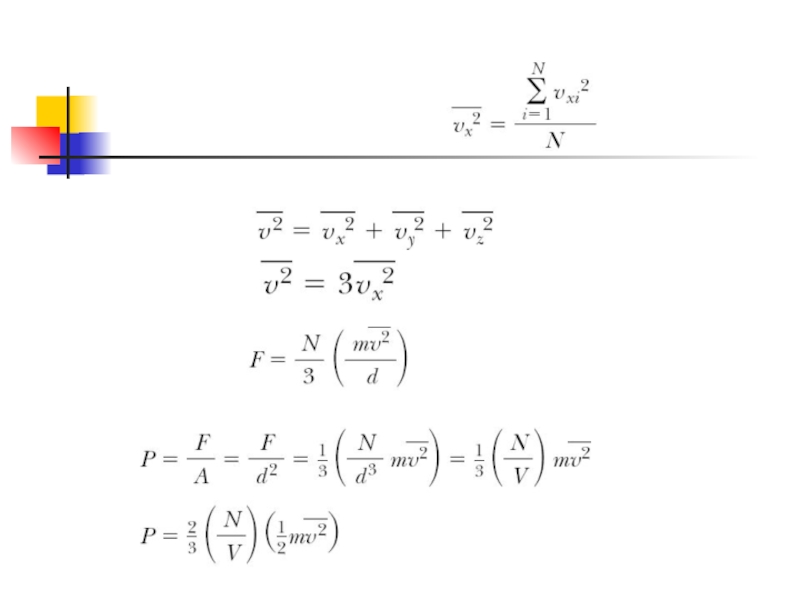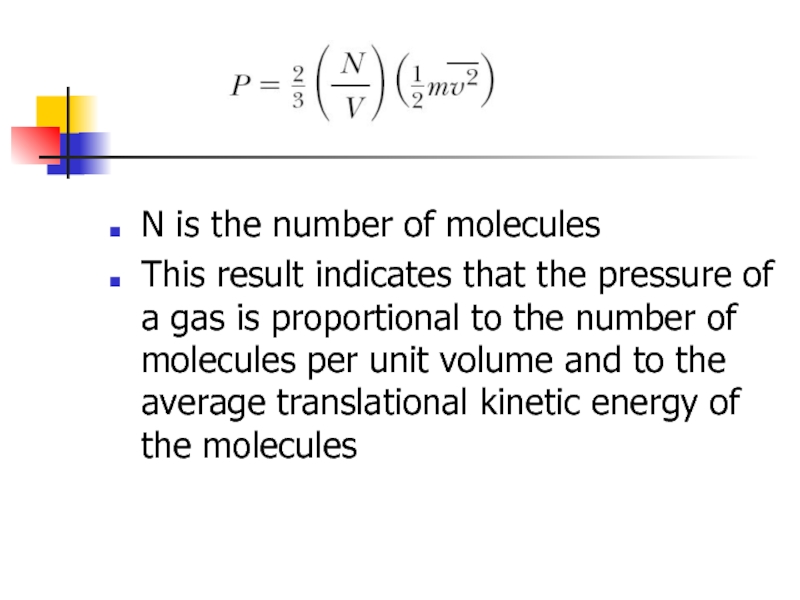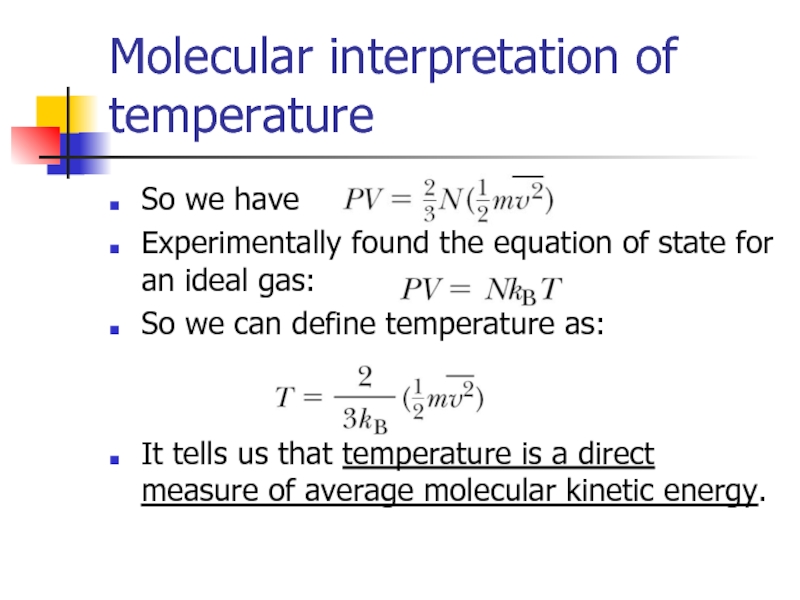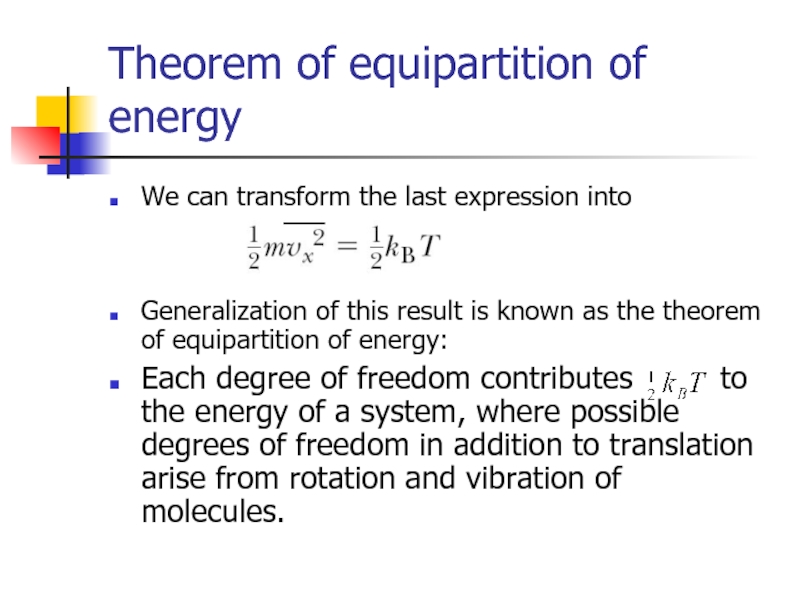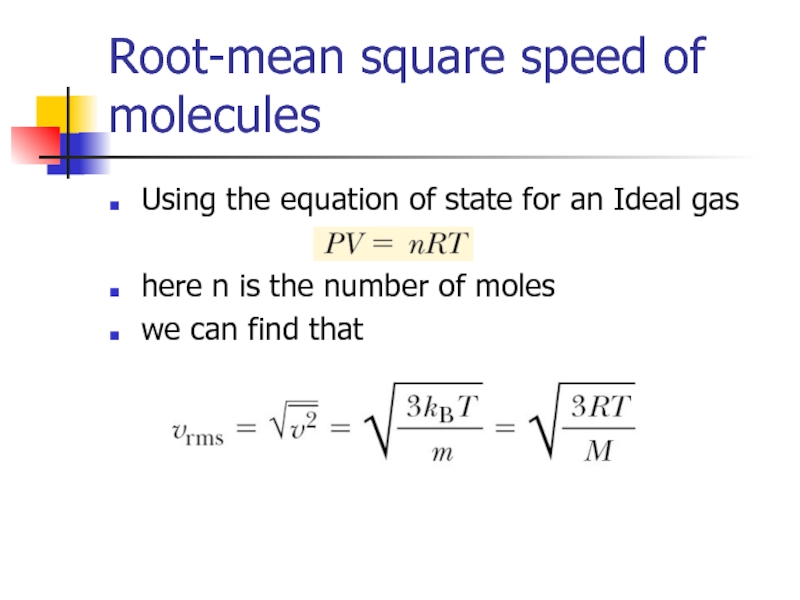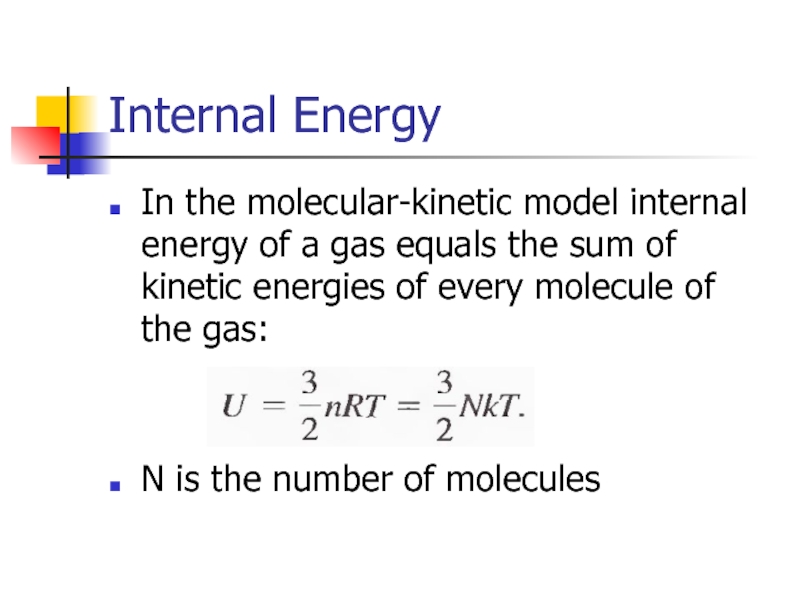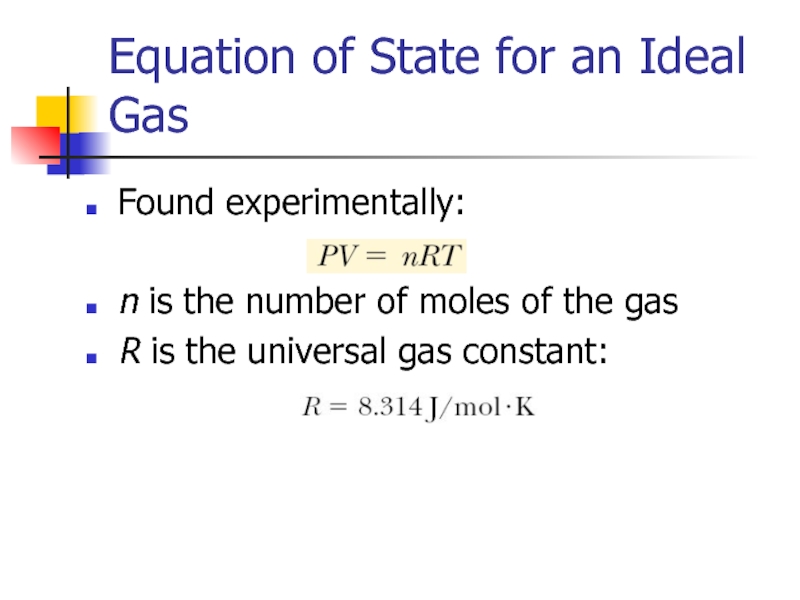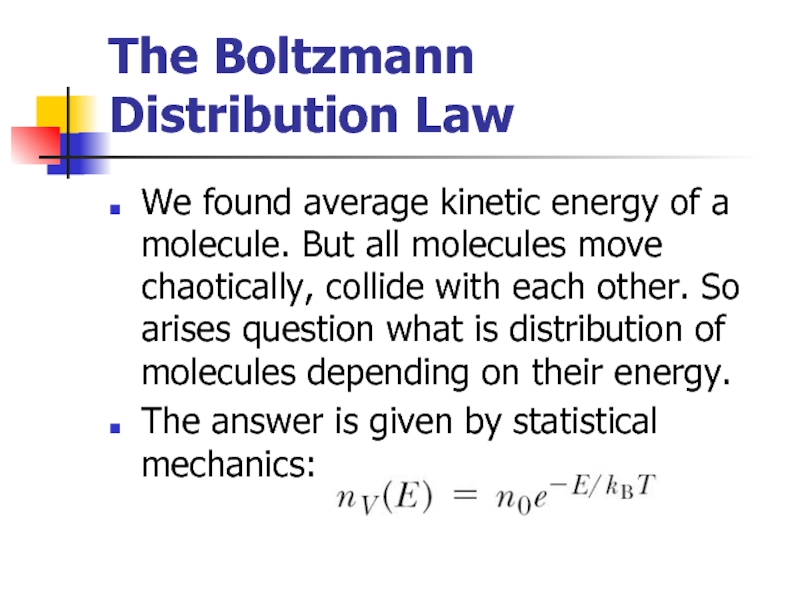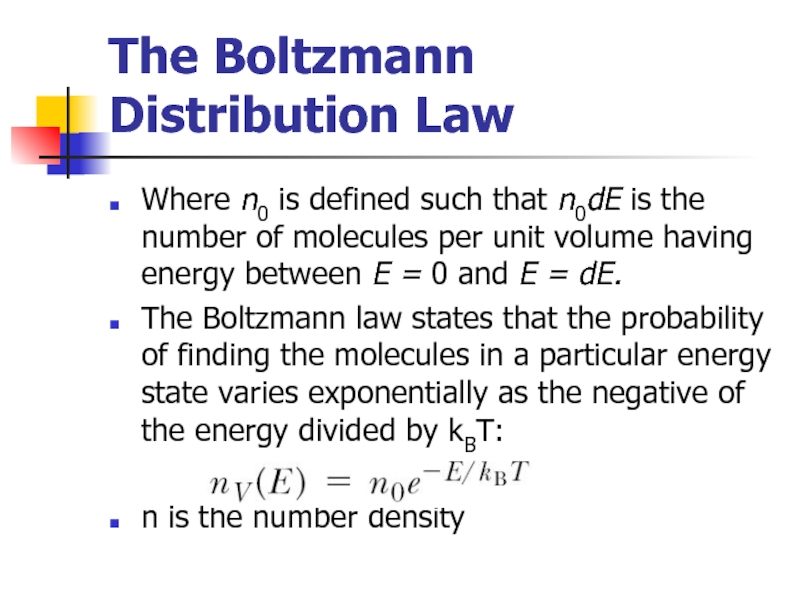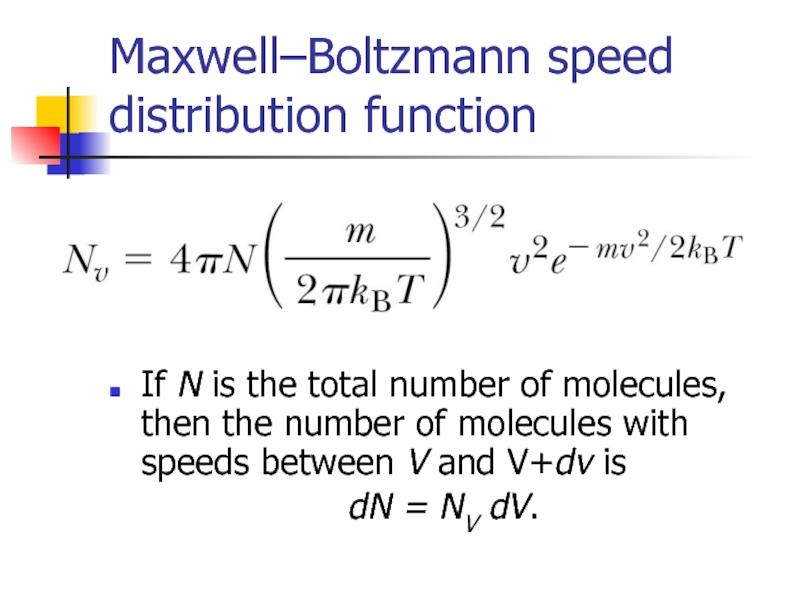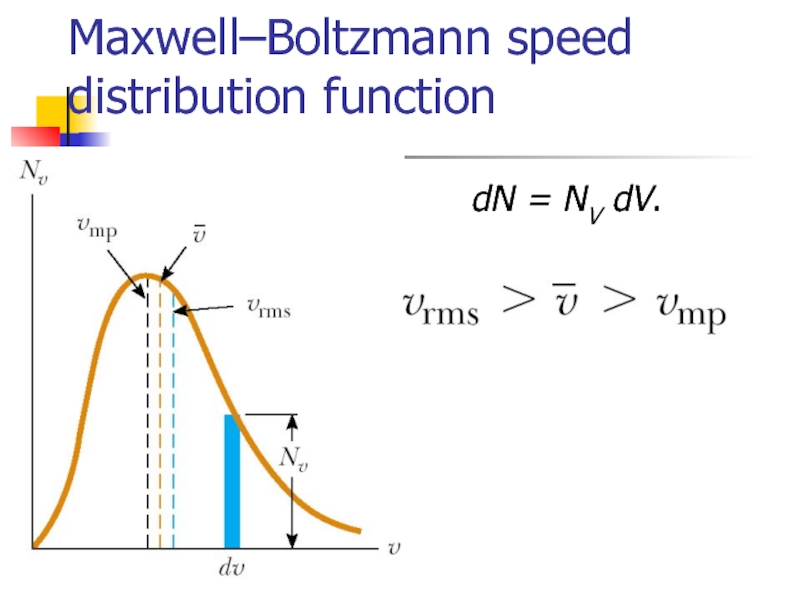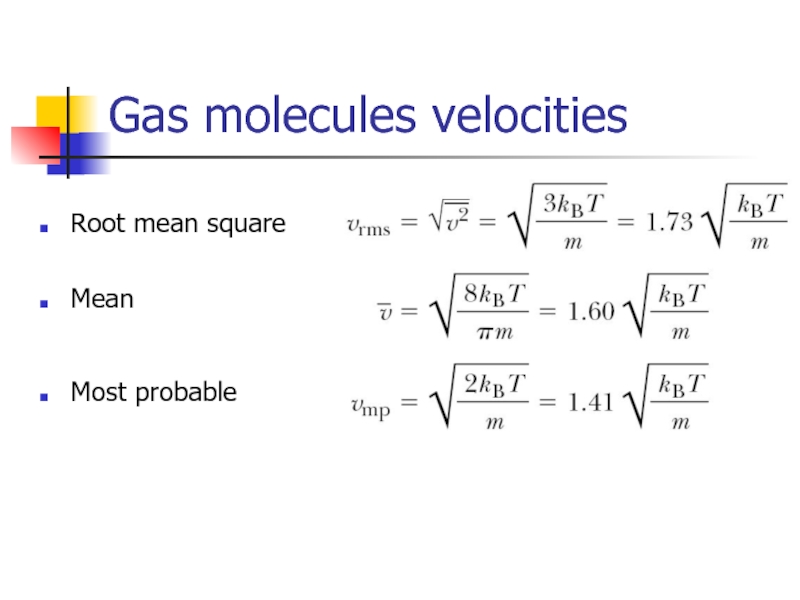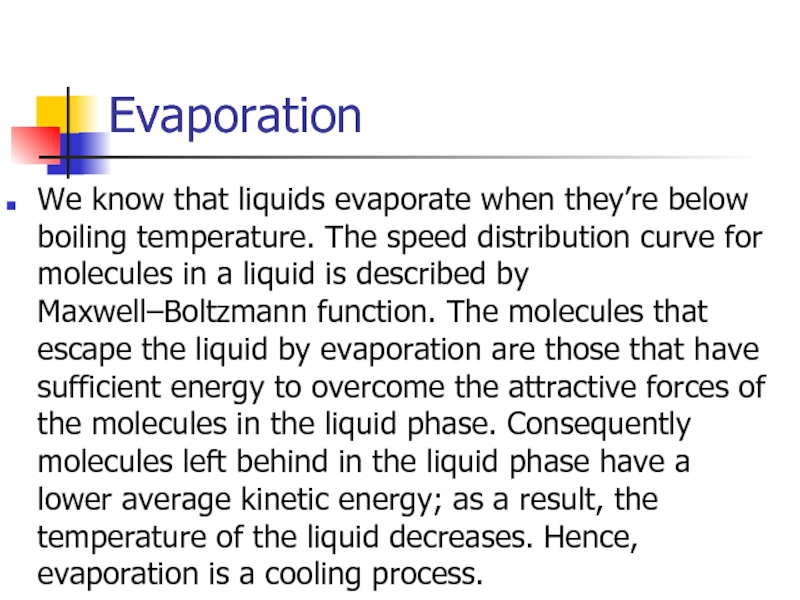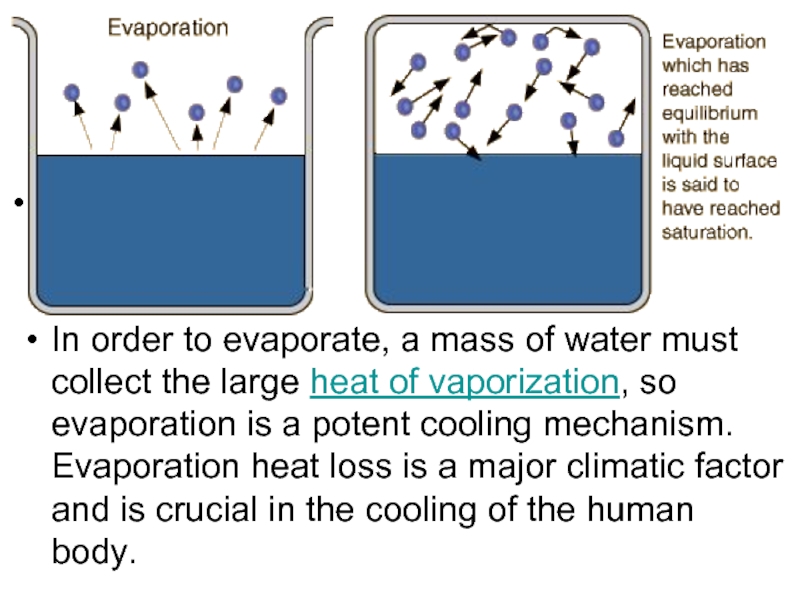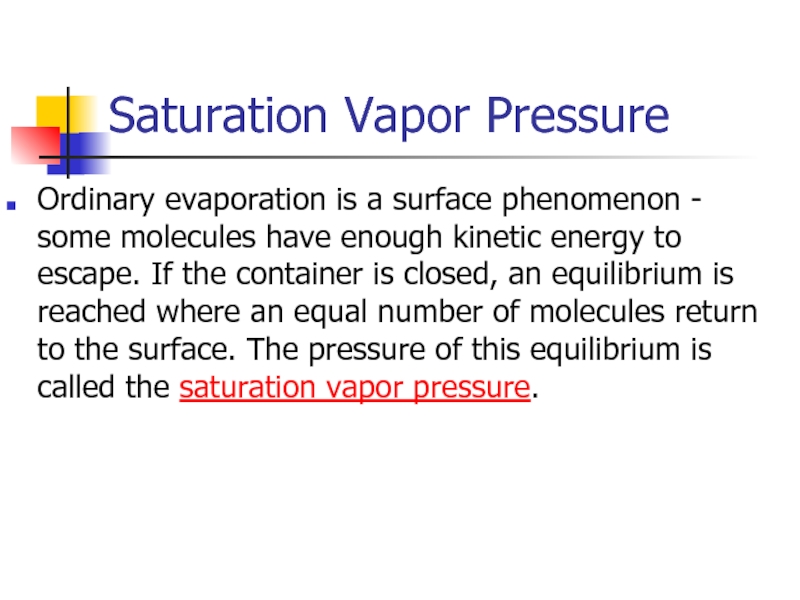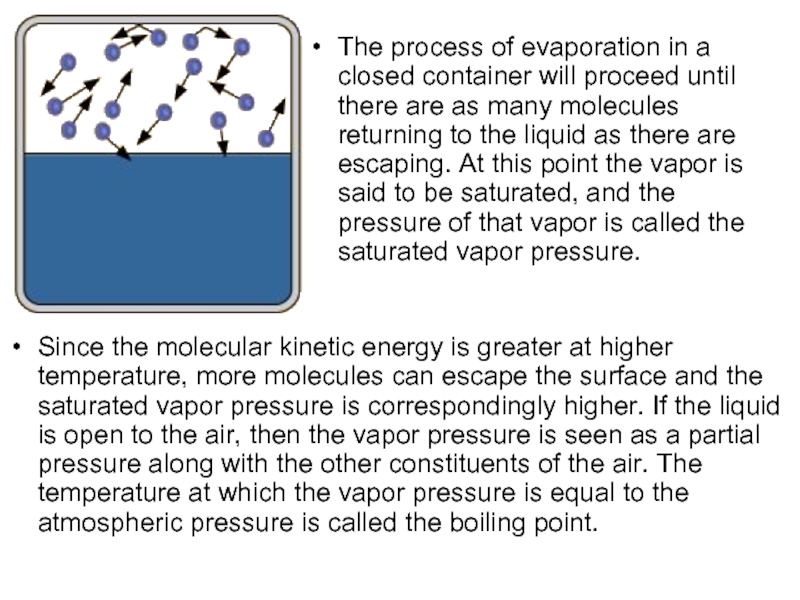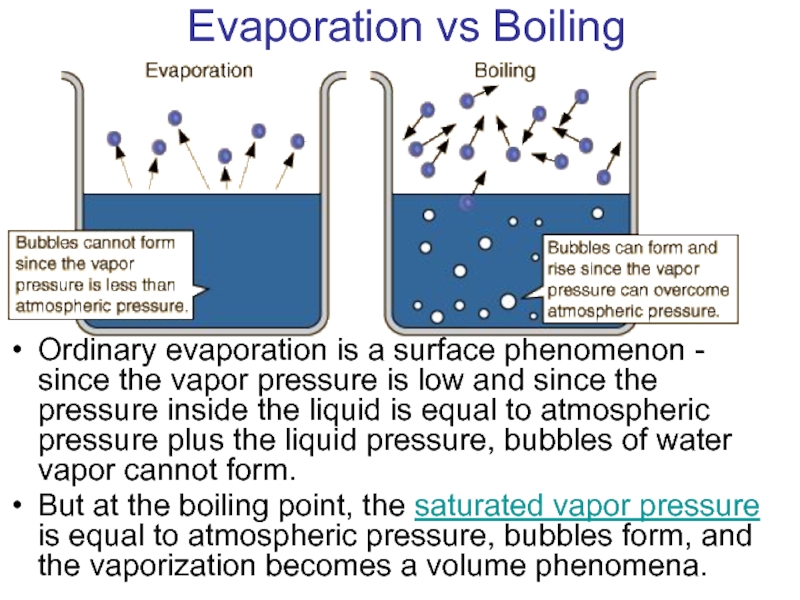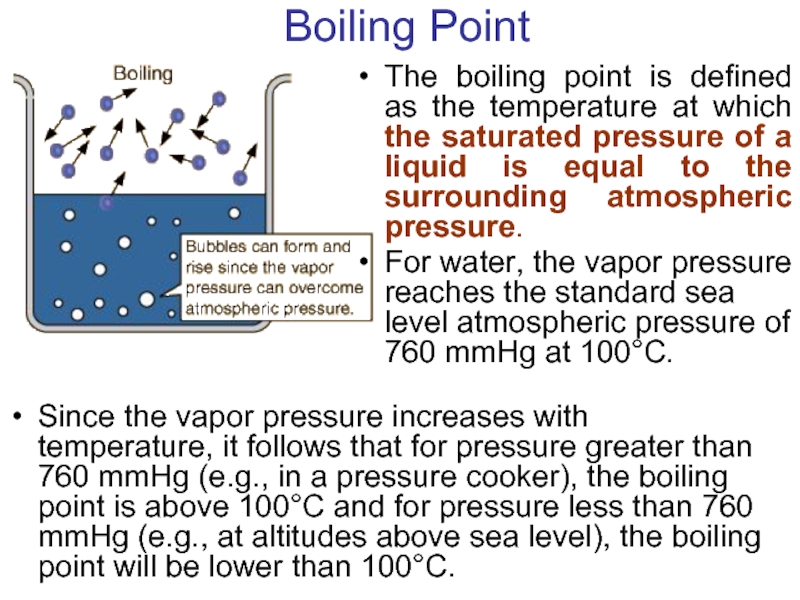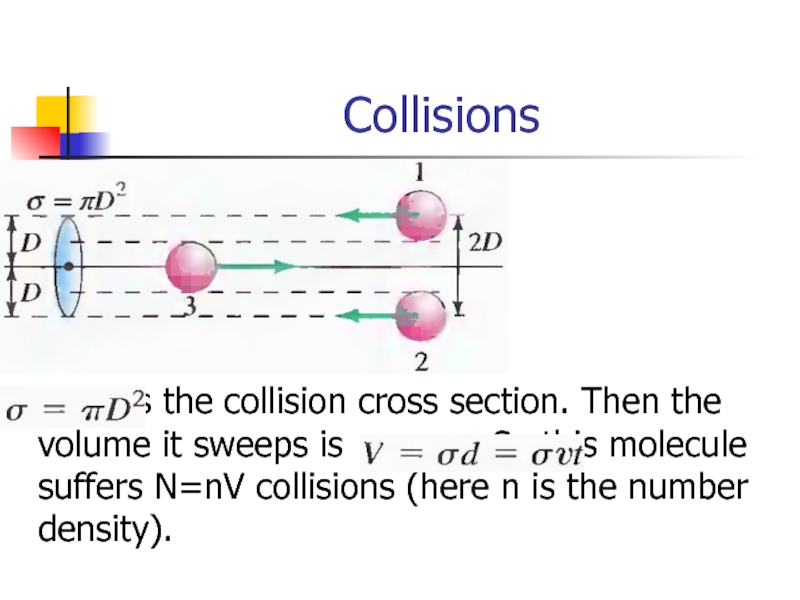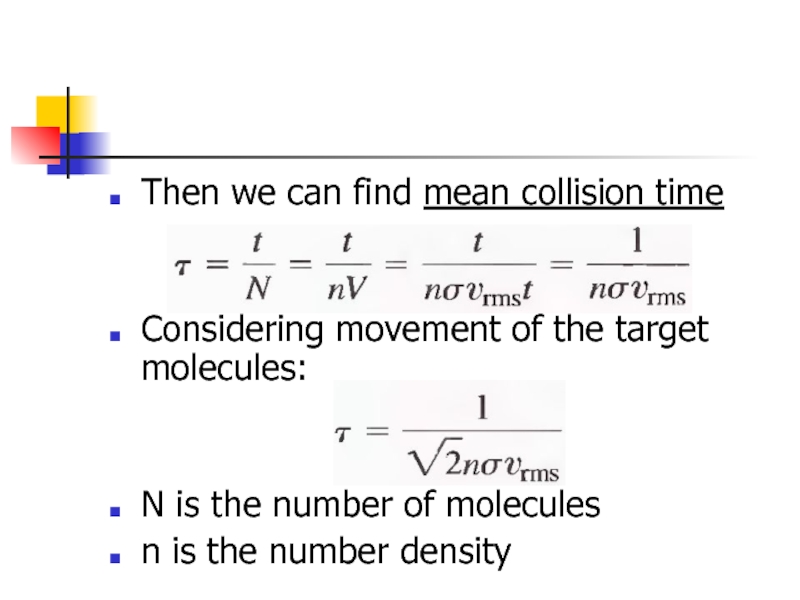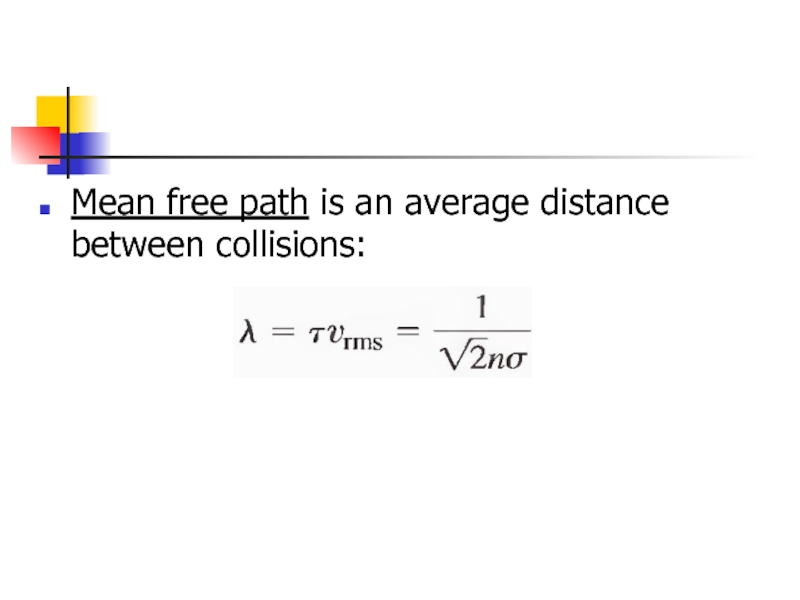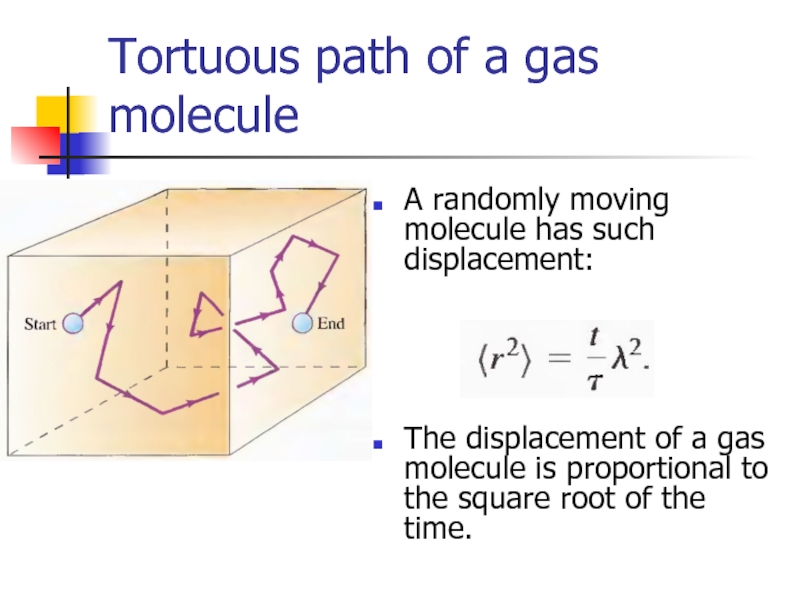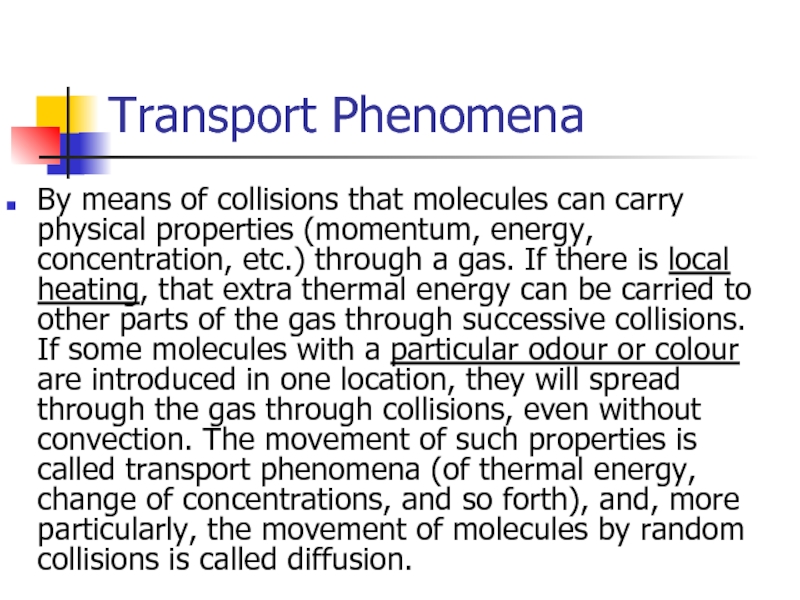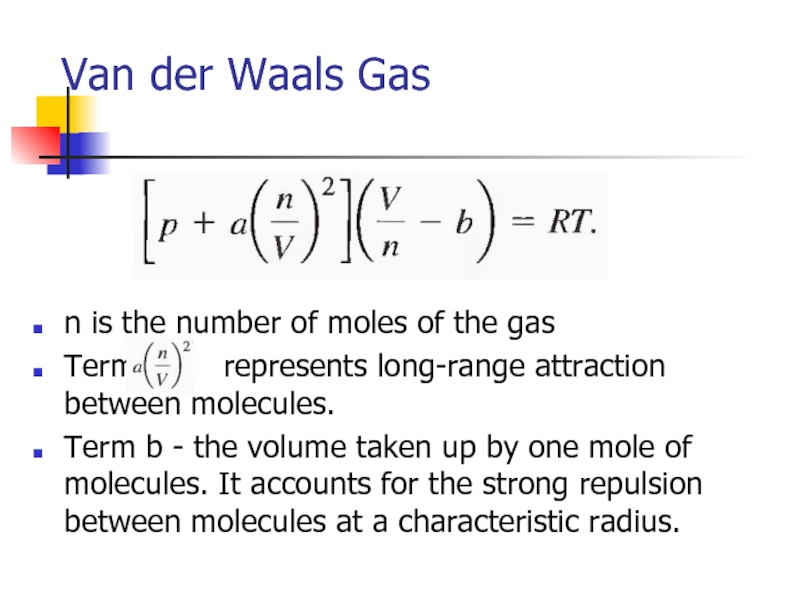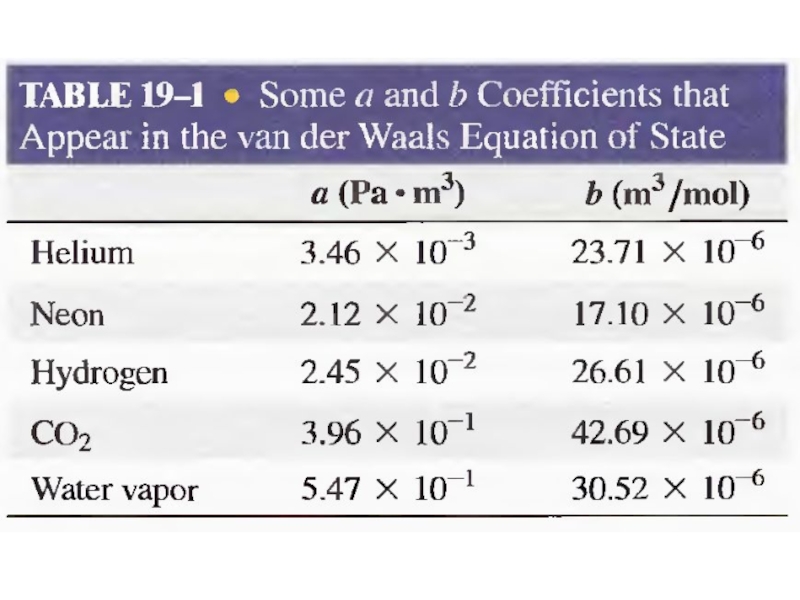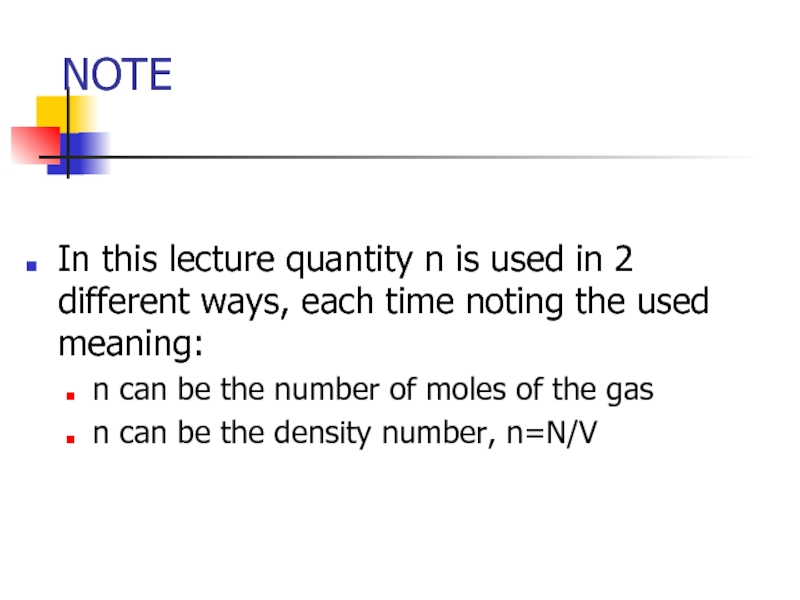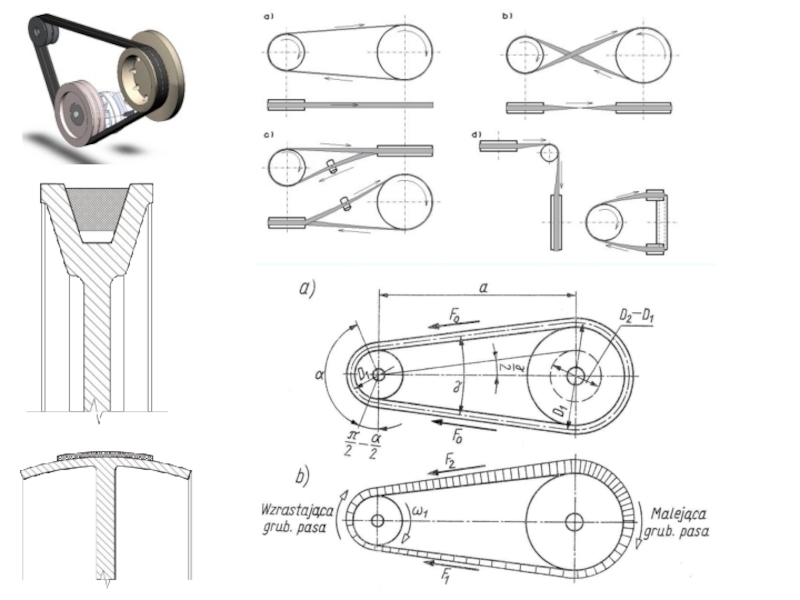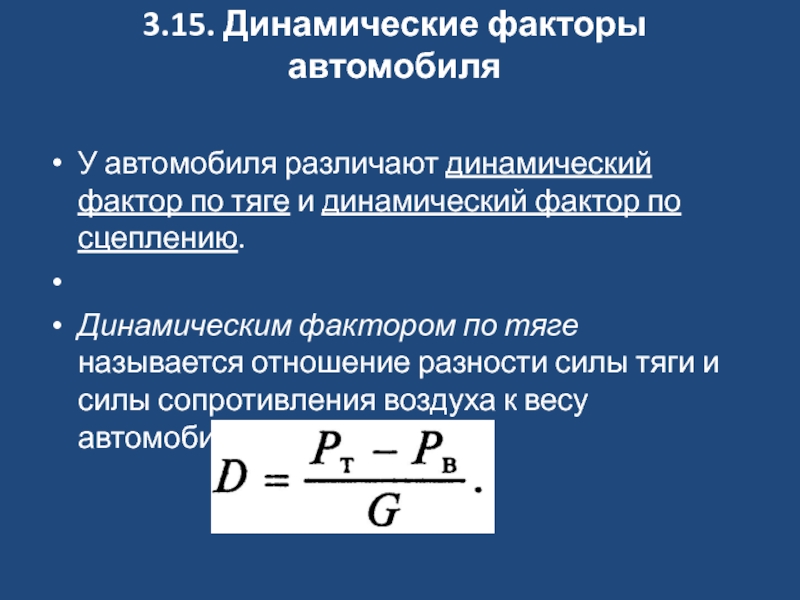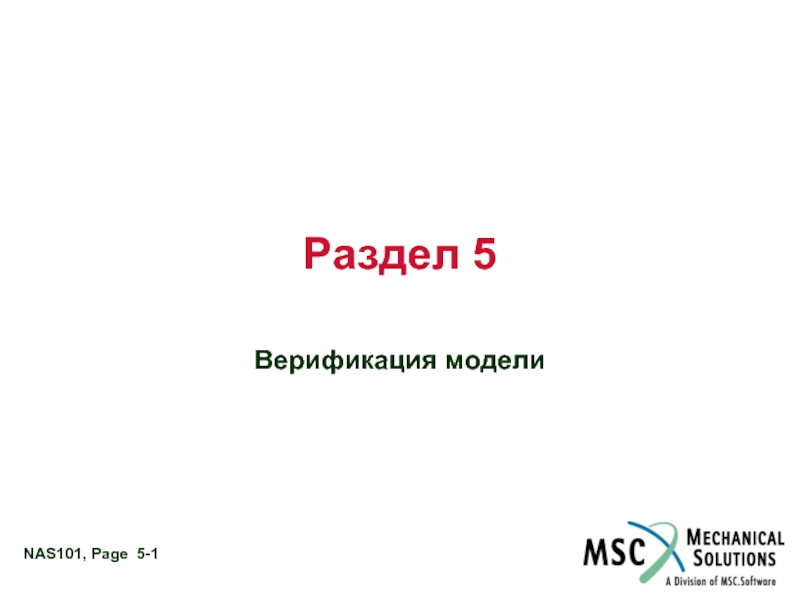- Главная
- Разное
- Дизайн
- Бизнес и предпринимательство
- Аналитика
- Образование
- Развлечения
- Красота и здоровье
- Финансы
- Государство
- Путешествия
- Спорт
- Недвижимость
- Армия
- Графика
- Культурология
- Еда и кулинария
- Лингвистика
- Английский язык
- Астрономия
- Алгебра
- Биология
- География
- Детские презентации
- Информатика
- История
- Литература
- Маркетинг
- Математика
- Медицина
- Менеджмент
- Музыка
- МХК
- Немецкий язык
- ОБЖ
- Обществознание
- Окружающий мир
- Педагогика
- Русский язык
- Технология
- Физика
- Философия
- Химия
- Шаблоны, картинки для презентаций
- Экология
- Экономика
- Юриспруденция
Molecular-kinetic theory of ideal gases презентация
Содержание
- 1. Molecular-kinetic theory of ideal gases
- 2. Lecture 5 MOLECULAR-KINETIC THEORY OF IDEAL
- 3. Main assumptions for Ideal Gas Model The
- 4. MOLECULAR-KINETIC THEORY OF IDEAL
- 5. The change of the i-th
- 6. Using previous expressions we can find x-component
- 8. N is the
- 9. Molecular interpretation of temperature So we have
- 10. Theorem of equipartition of energy We can
- 11. Root-mean square speed of molecules Using the
- 12. Internal Energy In the molecular-kinetic model internal
- 13. Equation of State for an Ideal Gas
- 14. The Boltzmann Distribution Law We found average
- 15. The Boltzmann Distribution Law Where n0 is
- 16. Maxwell–Boltzmann speed distribution function
- 17. Maxwell–Boltzmann speed distribution function dN = NV dV.
- 18. Gas molecules velocities Root mean square Mean Most probable
- 19. Evaporation We know that liquids evaporate when
- 20. . In order to evaporate,
- 21. Saturation Vapor Pressure Ordinary evaporation is a
- 22. The process of evaporation in a closed
- 23. Evaporation vs Boiling Ordinary evaporation is
- 24. Boiling Point The boiling point is defined
- 25. Collisions is
- 26. Then we can find mean collision
- 27. Mean free path is an average distance between collisions:
- 28. Tortuous path of a gas molecule A
- 29. Transport Phenomena By means of collisions that
- 30. Some terms The critical temperature of a
- 31. Van der Waals Gas n is the
- 33. NOTE In this lecture quantity n is
Слайд 2Lecture 5
MOLECULAR-KINETIC THEORY OF IDEAL GASES
THE MOLECULAR BASIS OF THERMAL PHYSICS
EVAPORATION
COLLISIONS AND TRANSPORT PHENOMENA
Слайд 3Main assumptions for Ideal Gas Model
The number of molecules in the
The molecules obey Newton’s laws of motion, but as a whole they move randomly. That is any molecule can move in any direction with any speed. At any given moment, one of the molecules move at high speeds, and others move at low speeds.
The molecules interact only by short-range forces during elastic collisions, no long-range forces on among molecules.
The molecules make elastic collisions with the walls.
All molecules of the gas are identical.
Слайд 4MOLECULAR-KINETIC THEORY OF IDEAL GASES
An ideal
is time for travelling from one side of the container to another.
Слайд 5 The change of the i-th molecule momentum after collision
Then the short-term force acting on the molecule during collision with the wall is:
The long-term force acting on the molecule in the x-direction is:
Слайд 6Using previous expressions we can find x-component of the long-term average
Then by a molecule on the wall:
So the net force of all molecules on the wall:
Слайд 8
N is the number of molecules
This result indicates that the pressure
Слайд 9Molecular interpretation of temperature
So we have
Experimentally found the equation of state
So we can define temperature as:
It tells us that temperature is a direct measure of average molecular kinetic energy.
Слайд 10Theorem of equipartition of energy
We can transform the last expression into
Generalization
Each degree of freedom contributes to the energy of a system, where possible degrees of freedom in addition to translation arise from rotation and vibration of molecules.
Слайд 11Root-mean square speed of molecules
Using the equation of state for an
here n is the number of moles
we can find that
Слайд 12Internal Energy
In the molecular-kinetic model internal energy of a gas equals
N is the number of molecules
Слайд 13Equation of State for an Ideal Gas
Found experimentally:
n is the number
R is the universal gas constant:
Слайд 14The Boltzmann Distribution Law
We found average kinetic energy of a molecule.
The answer is given by statistical mechanics:
Слайд 15The Boltzmann Distribution Law
Where n0 is defined such that n0dE is
The Boltzmann law states that the probability of finding the molecules in a particular energy state varies exponentially as the negative of the energy divided by kBT:
n is the number density
Слайд 16Maxwell–Boltzmann speed distribution function
If N is the total number of molecules,
dN = NV dV.
Слайд 19Evaporation
We know that liquids evaporate when they’re below boiling temperature. The
Слайд 20.
In order to evaporate, a mass of water must collect the
Слайд 21Saturation Vapor Pressure
Ordinary evaporation is a surface phenomenon - some molecules
Слайд 22The process of evaporation in a closed container will proceed until
Since the molecular kinetic energy is greater at higher temperature, more molecules can escape the surface and the saturated vapor pressure is correspondingly higher. If the liquid is open to the air, then the vapor pressure is seen as a partial pressure along with the other constituents of the air. The temperature at which the vapor pressure is equal to the atmospheric pressure is called the boiling point.
Слайд 23Evaporation vs Boiling
Ordinary evaporation is a surface phenomenon - since
But at the boiling point, the saturated vapor pressure is equal to atmospheric pressure, bubbles form, and the vaporization becomes a volume phenomena.
Слайд 24Boiling Point
The boiling point is defined as the temperature at which
For water, the vapor pressure reaches the standard sea level atmospheric pressure of 760 mmHg at 100°C.
Since the vapor pressure increases with temperature, it follows that for pressure greater than 760 mmHg (e.g., in a pressure cooker), the boiling point is above 100°C and for pressure less than 760 mmHg (e.g., at altitudes above sea level), the boiling point will be lower than 100°C.
Слайд 25Collisions
is the collision cross section. Then the volume it sweeps
Слайд 26
Then we can find mean collision time
Considering movement of the target
N is the number of molecules
n is the number density
Слайд 28Tortuous path of a gas molecule
A randomly moving molecule has such
The displacement of a gas molecule is proportional to the square root of the time.
Слайд 29Transport Phenomena
By means of collisions that molecules can carry physical properties
Слайд 30Some terms
The critical temperature of a gas is that temperature above
The saturated vapor pressure of a substance is the additional pressure exerted by vapor molecules on the substance and its surroundings under a condition of saturation.
Boiling is defined as vaporization within the body of a liquid when its vapor pressure equals the pressure in the liquid.
The absolute humidity is defined as the mass of water per unit volume of air.
The relative humidity can be computed from saturated-vapor-pressure tables according to the following definition:
Relative humidity = actual vapor pressure/ saturated vapor pressure.
Слайд 31Van der Waals Gas
n is the number of moles of the
Term represents long-range attraction between molecules.
Term b - the volume taken up by one mole of molecules. It accounts for the strong repulsion between molecules at a characteristic radius.
Слайд 33NOTE
In this lecture quantity n is used in 2 different ways,
n can be the number of moles of the gas
n can be the density number, n=N/V
